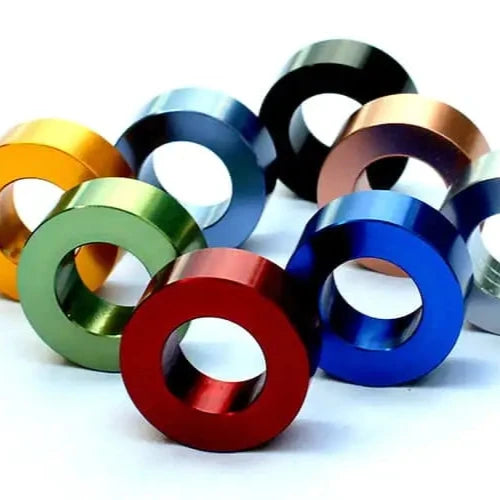Anodizing
Explore the benefits of anodizing finishes, a durable and corrosion-resistant surface treatment perfect for enhancing the longevity and aesthetics of aluminum parts. Ideal for industrial, automotive, and aerospace applications, anodizing offers a wide range of colors, improved wear resistance, and environmental sustainability. Our services comply with key MIL-SPEC standards, including MIL-A-8625, ensuring precision and reliability for your projects. Learn how anodizing can boost performance while maintaining compliance with industry standards. Contact us for expert anodizing solutions tailored to your needs!

FAQs
Anodizing is an electrochemical process that enhances the natural oxide layer on metal surfaces, particularly aluminum. It improves durability, corrosion resistance, and aesthetic appeal, making it a popular choice across industries.
The anodizing process creates a harder surface that resists scratches, wear, and damage, making products more robust for long-term use in various environments.
Anodizing is widely used in:
- Industrial applications: Machine components, tools, and equipment.
- Architectural designs: Facades, railings, and decorative elements.
- Consumer products: Electronics, kitchenware, and automotive parts.
Yes, anodizing is environmentally friendly. It uses no volatile organic compounds (VOCs), generates minimal waste, and extends the life of products, reducing environmental impact.
Absolutely! Anodizing offers a variety of colors, finishes, and textures, allowing for customization that combines functionality with stunning visual appeal.
The anodized layer acts as a barrier, shielding the metal from moisture, chemicals, and environmental factors, significantly reducing the risk of rust or corrosion.
Anodized surfaces are low-maintenance. Cleaning with mild soap and water is typically sufficient to keep them looking great and performing well.